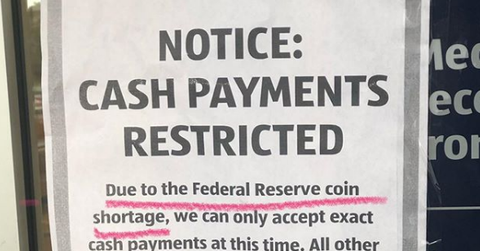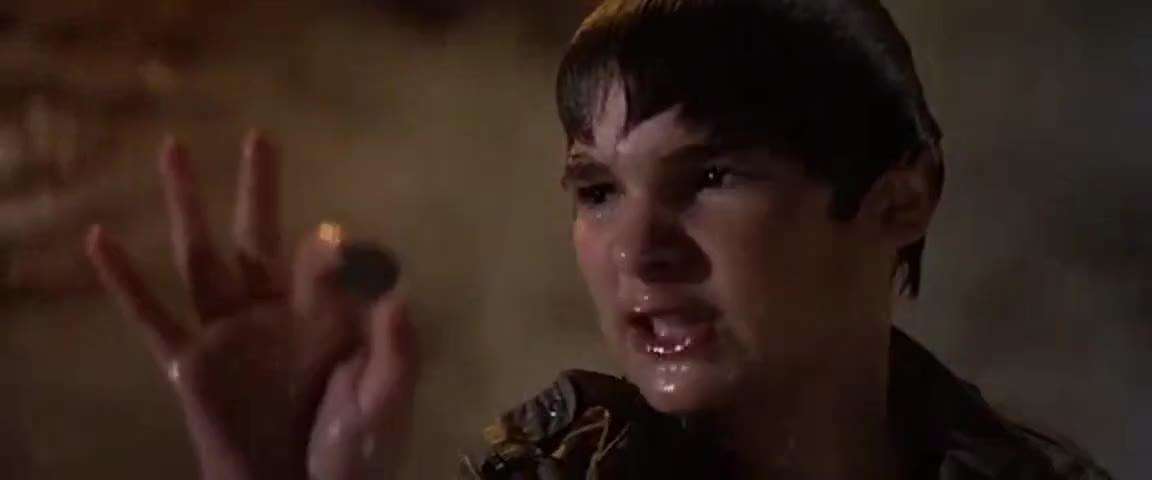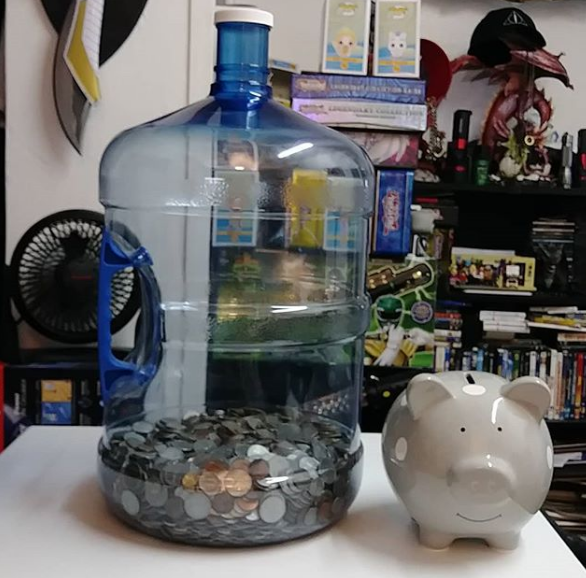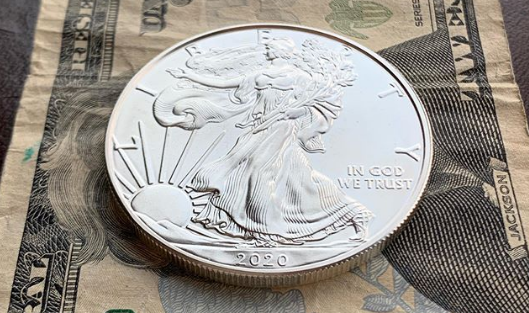There's a Coin Shortage, and Thank Goodness Because Carrying Change Is Annoying
Updated June 29 2020, 1:20 p.m. ET

Imagine you find yourself in a new city searching for parking. You see meters littering the sidewalk, annoying, but because it's 2020, there will definitely be the option to pay with a card, right? Or maybe they'll even have one of those annoying "Park Mobile" type apps that force you to load up a minimum prepaid amount. But whatever, it's cheaper than a parking ticket, right?
Besides, why would anyone still keep an old meter around, when there is a change shortage going on, right?
As you approach the meter, however, you realize it's a rusted gross hunk of metal with a single slot. If you happen to have cash on you, your only option is to find a place of business that'll break whatever singles you have to hand over quarters, or if you're lucky, dimes and nickels too, for the antiquated form of parking revenue.
That may prove difficult now, however, because coins aren't exactly plentiful these days.

Why is there a change shortage? COVID-19 is (mostly) to blame.
The Federal Reserve is denying some banking institutions' requests for mass quantities of coins simply because they don't have enough in circulation.
The reason? Folks are keeping their coins in jars, piggy banks, and old water jugs at home. They aren't tossing them into wishing wells while listening to the musical stylings of Travis Trent D'Arby, or recreating the best acting of Corey Feldman's career in The Goonies.
Customers who are freaked out by the prospect of contracting the coronavirus are staying away from trading physical cash, which extends to coins. They're just hoarding up the little pieces of metal which is having a significant effect on the U.S. treasury.
Interestingly enough, folks aren't hauling their coin collections to change machines like Coinstar in exchange for bills.
And while the use of cash as a currency has steadily been declining over the years, especially after the pandemic, there are still many businesses that rely on the stuff.
Jerome H. Powell Federal Reserve chair spoke about the issue and the potential problems it poses for businesses all across America.

"What’s happened is that with the partial closure of the economy, the flow of coins through the economy, it has gotten all — it’s kind of stopped. We’ve been aware of it, we’re working with the Mint to increase supply, we’re working with the reserve banks to get the supply to where it needs to be," the New York Times reported.
Steven Mnuchin has said that even though the pandemic has resulted in shutdowns of agencies all over the country, that the Bureau of Engraving and Printing has been working as usual to make sure that banks were receiving their cash supplies.
Admittedly, however, he has mentioned that they were "a little behind on coins."

"As it relates to coins, so many businesses shut down, a lot of coins got stuck in the system, so we are a little bit far behind on coins. But I know they are redoubling their efforts and that will work out fine," Mnuchin said.
So what's the plan? Well, the mint is planning to ship some 1.2 billion coins in June, then, production will be ramped up to 1.35 billion coins each month for the rest of 2020.
Normally, the amount is about a billion a month, so these increased production numbers should shore up the shortage in the near future and we'll be back to normal, at least when it comes to the amount of coins in our economy, by the end of the year.
The U.S. isn't the only place where physical cash hoarding has become a problem.

In other countries hit hard by the pandemic, like Italy, folks have been holding on to their money, paper bills and cash included, and have primarily been going paperless with their charges. This has had significant impacts on the global economy, with credit card companies and bank charging services seeing a huge uptick in user activity.